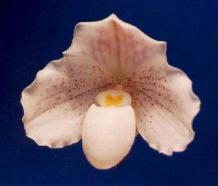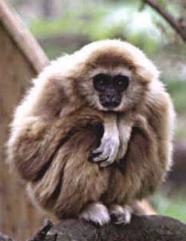Thailand designates four excellent new Ramsar sites
 The Government of Thailand, which joined the Convention on Wetlands just four years ago, has yet again increased its number of Wetlands of International Importance by designating four very interesting new coastal Ramsar sites, all of them including Marine National Parks at least partially and one of them already a UNESCO Man and the Biosphere Reserve. All include mangrove forests, coral reefs, and seagrass beds, many of them are lively ecotourism destinations, and all of them provide support for threatened or endangered species of flora or fauna or both. Thailand now has 10 Ramsar sites, covering a surface area of 370,600 hectares, and the Convention's 133 Contracting Parties have designated 1184 sites in all, covering 103,330,803 hectares.
The Government of Thailand, which joined the Convention on Wetlands just four years ago, has yet again increased its number of Wetlands of International Importance by designating four very interesting new coastal Ramsar sites, all of them including Marine National Parks at least partially and one of them already a UNESCO Man and the Biosphere Reserve. All include mangrove forests, coral reefs, and seagrass beds, many of them are lively ecotourism destinations, and all of them provide support for threatened or endangered species of flora or fauna or both. Thailand now has 10 Ramsar sites, covering a surface area of 370,600 hectares, and the Convention's 133 Contracting Parties have designated 1184 sites in all, covering 103,330,803 hectares.
Here's a brief description of the four new Thai sites, drawn from information included in the "Ramsar Information Sheets" provided with the designation documents.
Had Chao Mai Marine National Park - Ta Libong Island Non-Hunting Area - Trang River Estuaries in Trang Province (66,313 hectares, 07°22'N 099°24'E) comprises three connected wetland ecosystems with riverine, estuarine, and coastal wetlands, including mangroves and nypa, sand beach and rocky marine shores, mud flats, coral reefs and seagrass beds. The site supports at least 212 bird species, some of them vulnerable or endangered, as well as 75 species of fish, most of them of economic importance, and dugongs. The healthiest and most richly diverse seagrass ecosystem in Thailand, the Marine Park is home to eight species of seagrass. Inshore and offshore fisheries are locally important, and both small- and large-scale tourism is encouraged by white sandy beaches, coral reefs, and other attractive features. Potential threats are considered to come from agricultural encroachment, illegal timber logging, destructive fishing practices, and discharge of waste water upstream in the Trang River. Ramsar site no. 1182.
Kaper Estuary - Laemson Marine National Park - Kraburi Estuary in Ranong Province (122,046 ha, 09°36'N 098°39'E) is also a UNESCO Biosphere Reserve under the name Ranong. The largest concentration of mangrove forest remaining in the country and said to be one of the most extensive in the Indo-Pacific region, the site also includes nypa forests, mud flats, sandy beaches, coral reefs, and seagrass beds. The fish community among Ranong mangroves, despite heavy fishing pressure, is both abundant and diverse, with more than 82 species recorded. Diverse local cultures co-exist within the site, including Buddhist, Moslem, and Chao Lae ("sea gypsy") animist communities, among quite a few others. The site itself is chiefly used for research and environmental training, with agriculture and shrimp farming practiced in the surrounding area; over-harvesting of natural forest products and an increase in shrimp ponds and other aquaculture are perceived as potential threats, whereas ecotourism provides significant activities for local communities. Ramsar site no. 1183.
Mu Koh Ang  Thong Marine National Park in Surathani Province (10,200 ha, 09°37'N 099°41'E) is a complex of 42 small islands in the Gulf of Thailand, including sandy beaches, rocky cliffs, coral reefs, and young mangrove forests. The Ang Thong Lady Slipper (Paphiopedilum niveum) [right] is said to be endemic to a limestone mountain on Ang Thong Island. The shallow sea bed, sediments discharged from the Tapi River, and strong currents among islands contribute to lack of water transparency, which obstructs coral growth to some extent and limits diving tourism, but with its other attractions the area draws more than 50,000 Thai and international visitors per year for recreation and ecotourism. A management plan is in place. Ramsar site no. 1184.
Thong Marine National Park in Surathani Province (10,200 ha, 09°37'N 099°41'E) is a complex of 42 small islands in the Gulf of Thailand, including sandy beaches, rocky cliffs, coral reefs, and young mangrove forests. The Ang Thong Lady Slipper (Paphiopedilum niveum) [right] is said to be endemic to a limestone mountain on Ang Thong Island. The shallow sea bed, sediments discharged from the Tapi River, and strong currents among islands contribute to lack of water transparency, which obstructs coral growth to some extent and limits diving tourism, but with its other attractions the area draws more than 50,000 Thai and international visitors per year for recreation and ecotourism. A management plan is in place. Ramsar site no. 1184.
 Pang Nga Bay Marine National Park in Pang Nga Province (40,000 ha, 08°17'N 098°36'E) is a shallow bay also with 42 islands, comprising shallow marine waters and intertidal forested wetlands, with at least 28 species of mangrove; seagrass beds and coral reefs are also present. At least 88 bird species, including the globally threatened Malaysian Plover (Charadrius peronii) and Asian Dowitcher (Limnodromus semipalmatus), can be found within the site, as well as 82 fish species, 18 reptiles, three amphibians, and 17 mammal species, including endangered Dugong, White-handed Gibbon (Hylobates lar) [left], Serow (Capricornis sumatraensis), and Black Finless Porpoise (Neophocaena phocaenoides). A number of diverse cultures co-exist in local communities, practicing fishing, harvesting Nypa palm fronds for thatch, and catering to an extensive international tourist presence drawn both by the natural beauties and by archaeological sites, including paintings more than a thousand years old. Ramsar site no. 1185.
Pang Nga Bay Marine National Park in Pang Nga Province (40,000 ha, 08°17'N 098°36'E) is a shallow bay also with 42 islands, comprising shallow marine waters and intertidal forested wetlands, with at least 28 species of mangrove; seagrass beds and coral reefs are also present. At least 88 bird species, including the globally threatened Malaysian Plover (Charadrius peronii) and Asian Dowitcher (Limnodromus semipalmatus), can be found within the site, as well as 82 fish species, 18 reptiles, three amphibians, and 17 mammal species, including endangered Dugong, White-handed Gibbon (Hylobates lar) [left], Serow (Capricornis sumatraensis), and Black Finless Porpoise (Neophocaena phocaenoides). A number of diverse cultures co-exist in local communities, practicing fishing, harvesting Nypa palm fronds for thatch, and catering to an extensive international tourist presence drawn both by the natural beauties and by archaeological sites, including paintings more than a thousand years old. Ramsar site no. 1185.